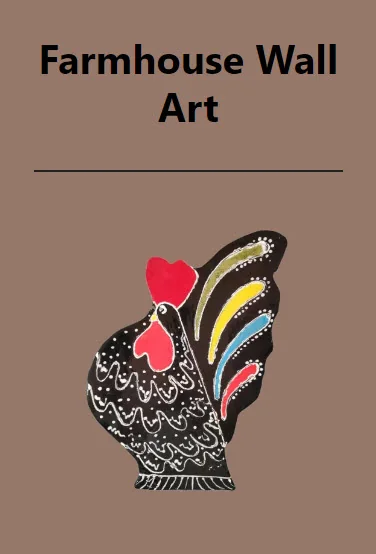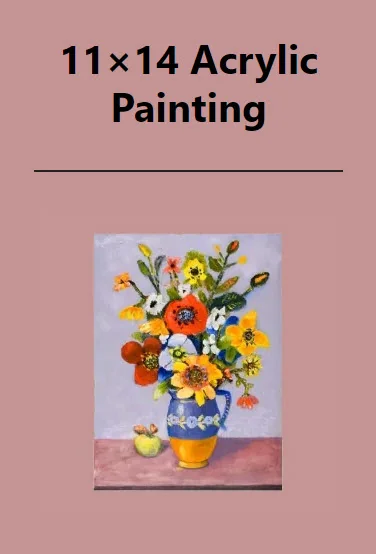It’s a type of porous pottery made from clay and fired at low temperatures. Characterized by its rustic look and earthy colors, it’s often used for ceramic dishes, pots, and decorative items.
Hey there, I’m Ed Shears, and I’m here to give you the lowdown on earthenware, the humble yet captivating member of the pottery family.
You know, earthenware isn’t just about making pots and plates. It’s like holding a piece of history right in your hands. Earthenware has this raw, earthy charm that you just don’t get with the fancy stuff like porcelain. It’s all about that real, gritty connection to our past.
When you come across an earthenware piece, it’s not just an artifact. It’s a sneak peek into what life was like way back when. The kind of clay they used, the patterns they painted, even the leftovers stuck inside, it’s like a time capsule telling us what folks ate, how they cooked, and where they traded.
And here’s the thing about earthenware, it’s all about tradition. These techniques, they get passed down through generations. It’s not just about making pottery; it’s about keeping a whole culture alive. Every region, every community, they have their own way of doing things, and that’s what makes each piece special.
So, whenever you see a piece of earthenware, remember, it’s not just craft. It’s a connection to our collective history, a showcase of human creativity and survival. That’s the real magic of earthenware. It’s more than just clay and fire; it’s about our relationship with the earth and each other.
Introduction
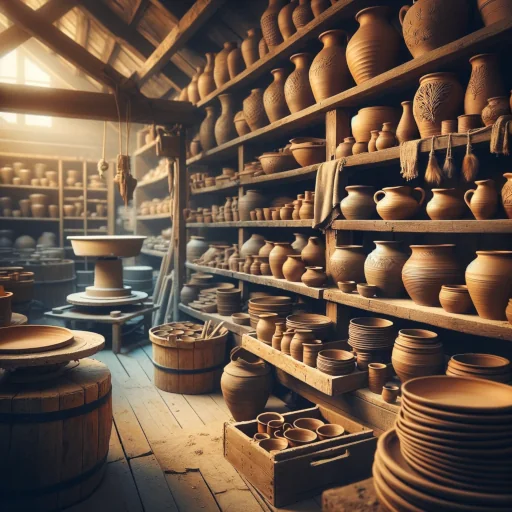
Definition and Characteristics
Let’s talk about what sets earthenware apart. It’s the kind of pottery that’s more like the earth it comes from – not quite rock-solid, a bit rough around the edges, and charmingly imperfect. Here’s what you need to know:
- Clay Composition: Earthenware is made from natural clay with a gritty texture. It’s got a heft to it that tells a story of the earth.
- Firing Temperature: We fire this pottery at temperatures between 1,000 and 1,150 degrees Celsius. That’s hot, but not hot enough to turn it to stone, which keeps it porous.
- Porous Nature: This means it breathes. Water can seep through its walls, which can be a plus for certain plants or a canvas for glazing artistry.
Historical Significance
Earthenware isn’t just a pot; it’s a piece of history. It’s been with us since the dawn of civilization, from the ancient water jugs of Mesopotamia to the terracotta warriors guarding China’s first emperor. Here’s a snapshot:
- Ancient Utility: Our ancestors used it for everything – cooking, storage, you name it. It was the Tupperware of the ancient world.
- Cultural Tapestry: Every culture has its spin on earthenware, each with its unique flair, telling tales of times and people long past.
For a detailed journey through the history and traditional uses of earthenware, visit our comprehensive exploration:
Environmental Impact
You know, in all my years working with pottery, one thing that often gets overlooked is the environmental side of things, especially when it comes to earthenware. See, earthenware’s got a bit of an edge over some of these newer materials. It’s kinder to our planet, and here’s why.
First off, the stuff earthenware is made from, it’s just good old natural clay. We’re not talking about any fancy, man-made materials here. It’s just earth, water, maybe some natural minerals for color. That’s about as eco-friendly as it gets.
Then there’s the way we fire it. Traditional earthenware firing methods, they’ve been around for centuries. Sure, they might not be as high-tech as some modern processes, but that’s part of their charm. These methods don’t rely heavily on industrial processes that pump out loads of carbon emissions. But wait there is more to this topic. And I am specifically referring to the use of electric kilns.
In a world where we’re all trying to be a bit more conscious about our ecological footprint, sticking to the basics with earthenware is a smart move. It’s just another reason to appreciate this craft. It’s not just about creating something beautiful or functional; it’s about doing it in a way that respects the environment. That’s something I’ve always valued in my work, and it’s a pretty important consideration for anyone in the pottery game.
The Electric Kin
While traditional earthenware firing methods are generally more eco-friendly than industrial processes, there’s a catch when it comes to electric kilns. These kilns, often used in modern pottery, do indeed consume a significant amount of electricity.
See, firing pottery in an electric kiln requires maintaining high temperatures for several hours, which can rack up quite the energy bill and, consequently, the carbon footprint. It’s one of those trade-offs in the pottery world. On one hand, electric kilns offer precision and consistency in temperature control, which is great for getting consistent results. But on the flip side, they’re not the most energy-efficient option out there.
In my 35 years in this field, I’ve seen a growing awareness around this issue. It’s pushing potters and studios to think about more sustainable practices, like using renewable energy sources to power their kilns or optimizing firing schedules to reduce energy consumption. It’s all about finding that balance between the art of pottery and being responsible stewards of our environment. The good news is, with technology improving and more awareness, I believe will will find better ways to do just that.
Types of Earthenware
Alright, let’s dive into the colorful world of earthenware types. I’ve got the scoop on some of the most charismatic clays out there, ha!
Terracotta
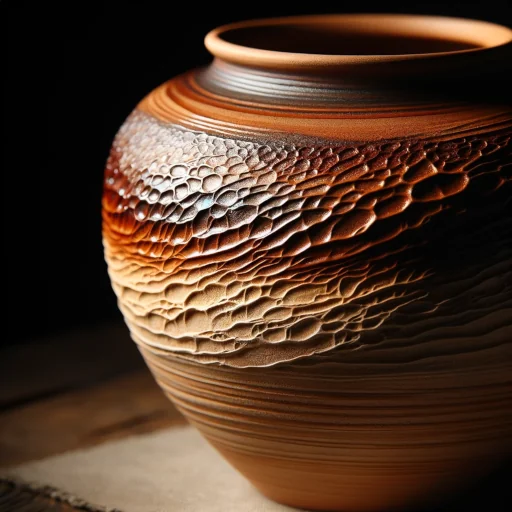
Contemporary Uses and Artistic Expressions
Terracotta, that sun-baked earthy clay, isn’t just for ancient sculptures and flower pots anymore. Here’s how it’s making a splash in the modern world:
- Home Decor: It’s the go-to for a rustic, warm vibe in home interiors. Think terracotta tiles, lamp bases, and wall hangings.
- Garden Pizzazz: Beyond pots, terracotta makes for fantastic garden art, wind chimes, and bird baths.
- Artistic Medium: Artists today are pushing terracotta to new limits, sculpting it into avant-garde art that speaks to contemporary themes.
Faience and Majolica
Stylistic and Functional Differences
Moving on to the glossy world of Faience and the vibrant realm of Majolica, these two are like the dressed-up cousins at the earthenware family reunion.
- Faience: Known for its smooth, enamel-like surface, Faience is a hit for intricate, painted details. It’s less about utility, more about beauty.
- Jewelry: Those shiny beads and pendants? Faience.
- Architectural Flourishes: It’s a star in mosaic tiles and ornamental facades.
- Majolica: With its Italian roots, Majolica is all about bold colors and a glossy finish.
- Tableware: It turns any meal into a feast for the eyes with its decorative plates and serving bowls.
- Collectibles: Majolica pieces are often collectors’ items, thanks to their distinctive, hand-painted designs.
Earthenware in Modern Day
Hey, let’s chat about how earthenware is keeping up with the times and even setting some trends.
Current Uses
Sustainable Practices and Contemporary Art
Earthenware’s making a comeback, and it’s not just about nostalgia. Here’s where it’s making waves:
- Eco-Friendly Options: In a world looking to cut down on plastic, earthenware’s providing a breath of fresh air with biodegradable planters and natural water coolers.
- Artisanal Kitchenware: Chefs and home cooks alike are turning to earthenware for its organic appeal and the unique flavors it brings to food.
- Art Installations: Contemporary artists are choosing earthenware for its raw, tactile quality, creating pieces that challenge our perceptions of traditional ceramics.
Innovation and Technology
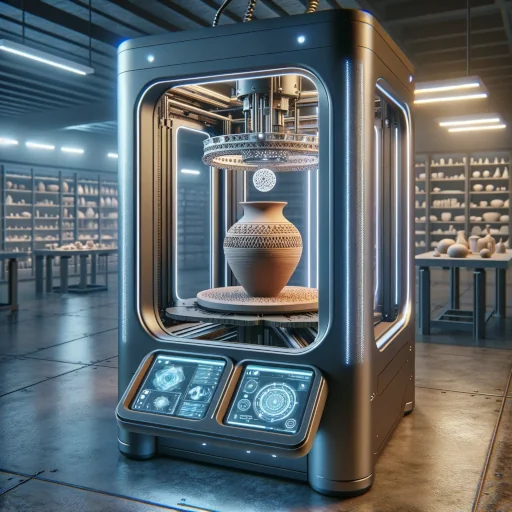
Advancements Impacting Earthenware
Technology’s not just for the latest gadgets; it’s reshaping the world of earthenware too.
- 3D Printing: Imagine printing a vase at home. 3D clay printers are making it possible, opening up new avenues for design and customization.
- Improved Durability: Advances in glazes and firing techniques mean today’s earthenware can stand up to more wear and tear, even becoming dishwasher safe.
Making Earthenware
I’m here, ready to roll up the sleeves and get our hands dirty with the latest in earthenware creation.
Craftsmanship and Techniques
Innovations in Crafting
Gone are the days of just the potter’s wheel and kiln. Here’s what’s new on the block or coming one day soon:
- Precision Tools: We’ve got laser-guided cutters and high-pressure extruders that are changing the shapes and textures we can achieve.
- Digital Design: Potters are using software to visualize and tweak their designs before the clay is even touched.
- Eco-Friendly Methods: There’s a push for more sustainable practices, like using recycled materials and solar-powered kilns. Wow, hold on, we got a long way to go before this actually happens, right! Can you imagine the size of the kiln battery that would be needed!!!
DIY Earthenware
Getting Hands-On at Home
Fancy making your own earthenware? It’s not just for the pros. Check out these DIY tips:
- Home Firing: No kiln? No problem. You can use a pit fire in your backyard. It’s ancient tech, but it works. While technically true, this type of firing requires a lot, or at least some level of experience. So it’s not as easy as digging a hole and firing up some clay!
- Hand-Building Techniques: From pinching to coiling, you can shape your own pots without any fancy equipment.
- Glazing at Home: Experiment with homemade glazes.
Earthenware in Art
I’m now ready to walk you through the vibrant intersection of earthenware and contemporary art.
Contemporary Artists
Pioneers of Modern Earthenware
The art world is brimming with talented souls molding earthenware into groundbreaking works. Here’s the lowdown:
- Innovative Creators: Artists like Grayson Perry1 and Magdalene Odundo2 are redefining earthenware, using it to explore themes from identity to global culture.
- Technique Twisters: Some artists are blending traditional techniques with modern technology, creating pieces that challenge our understanding of what earthenware can be.
- Sustainability Champions: There’s a growing movement of artists using earthenware to comment on environmental issues, highlighting the material’s natural and degradable qualities.
Exhibitions and Collections
Showcasing Earthenware’s Versatility
If you’re keen to see earthenware’s artistic side, there’s plenty to explore:
- World-Renowned Museums: Institutions like the Victoria and Albert Museum in London3 often feature earthenware in their collections, from ancient artifacts to contemporary pieces.
- Specialized Exhibits: Keep an eye out for exhibitions dedicated to ceramics. They’re hotspots for witnessing the evolution of earthenware in the art scene.
- Local Art Scenes: Don’t overlook local galleries and art fairs. They’re treasure troves for discovering up-and-coming earthenware artists.
Preservation and Care
Maintenance Tips
Keeping Your Earthenware Pristine
Earthenware might have an old soul, but with the right care, it can last generations. Here’s how to treat it right:
- Regular Cleaning: Use gentle soaps and avoid abrasive scrubbers. Hand wash only, as most earthenware doesn’t take kindly to the dishwasher’s heat and pressure.
- Proper Storage: Store your earthenware in a cool, dry place. If stacking is necessary, cushion layers with soft materials to prevent scratches or chips.
- Avoid Sudden Temperature Changes: Earthenware can crack if it’s shocked by rapid temperature shifts. Always let it adjust slowly, especially when dealing with hot foods or liquids.
Restoration
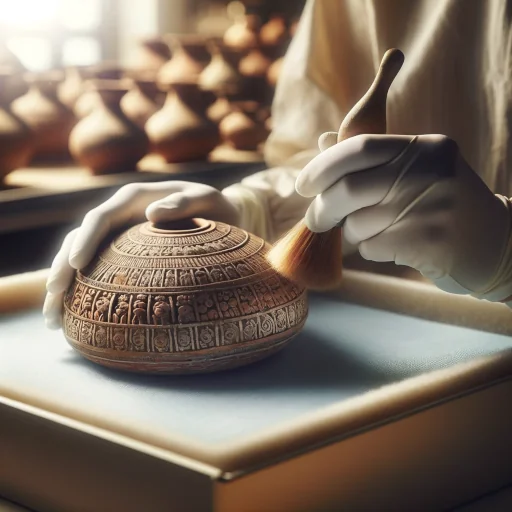
The Art of Bringing Earthenware Back to Life
Restoring earthenware is a delicate dance between art and science. Here’s a peek into the process:
- Crack and Chip Repair: Professionals use fillers that can be tinted to match the original. It’s meticulous work that often involves painting fine details by hand.
- Cleaning and Consolidation: For earthenware with historical value, conservators gently clean the surfaces and consolidate the structure to prevent further decay.
- Case Studies: Institutions like the British Museum4 have documented restoration projects, offering insights into the challenges and triumphs of earthenware conservation.
Remember, if you’ve got a piece of earthenware that’s seen better days, consult with a pro. Restoration is not a DIY affair, it’s a craft honed by experts with years of experience.
Earthenware Knowledge Quiz
Think you know your pottery? Let’s put that knowledge to the test. Answer the questions below and click to reveal the answers. No peeking before you guess!
What is Earthenware Made Of?
- A. Porcelain clay
- B. Natural clay
- C. Plasticine
- D. Cement
Click to Reveal AnswerB. Natural clay. Earthenware is made from natural, gritty clay that gives it a rustic look and feel.At What Temperature is Earthenware Typically Fired?
- A. 800-900°C
- B. 1000-1150°C
- C. 1200-1400°C
- D. 1500-1700°C
Click to Reveal AnswerB. 1000-1150°C. This is the typical firing range for earthenware, making it porous and not as vitrified as stoneware or porcelain.What Should You Avoid When Caring for Earthenware?
- A. Gentle soap
- B. Abrasive scrubbers
- C. Soft cloths
- D. Air drying
Click to Reveal AnswerB. Abrasive scrubbers. These can damage the surface of earthenware. It’s best to use gentle cleaning methods.
FAQ on Earthenware
Is earthenware the same as ceramic?
Earthenware is a subset of ceramics. While all earthenware is ceramic, not all ceramics are earthenware. Ceramics include a wide range of materials like stoneware and porcelain, whereas earthenware is distinguished by its porous nature and lower firing temperature.
What material is earthenware?
Earthenware is crafted from natural clay that has a significant amount of iron, giving it a distinctive reddish hue after firing. This type of clay is abundant and has been used since ancient times for pottery.
What is earthenware material?
The material known as earthenware is a type of clay that is fired at relatively low temperatures. This results in a finished product that is porous and can be glazed or unglazed. It’s known for its rustic appearance and has been used throughout history for both functional and decorative items.
What is the difference between terracotta and earthenware?
Terracotta is a specific type of earthenware made from a particular red or brownish-orange clay and is usually left unglazed. It’s commonly used for plant pots, tiles, and sculptures. Earthenware, more broadly, can come in various colors and finishes, and is often glazed for use in dinnerware and decorative objects.
Footnotes

